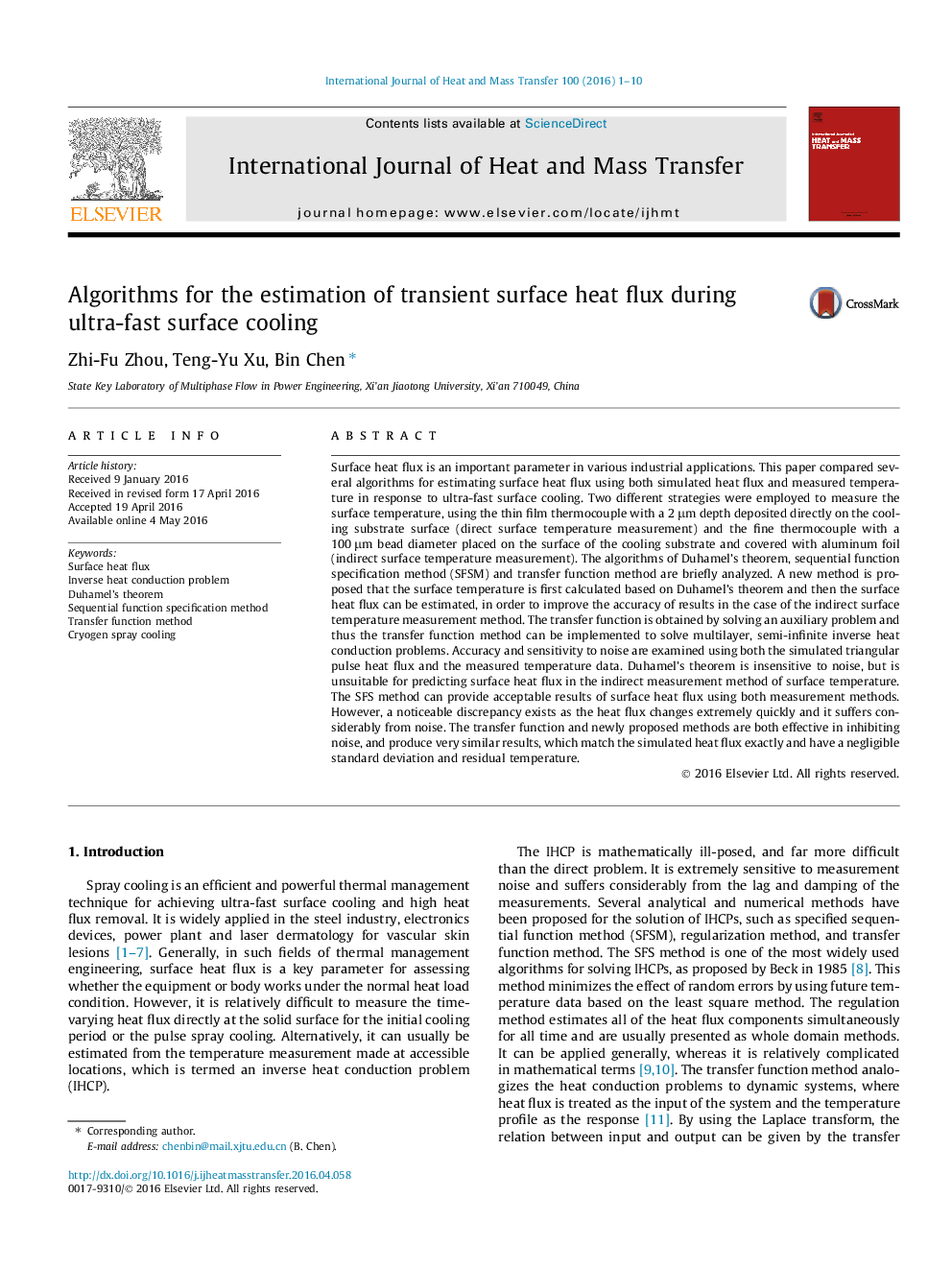| کد مقاله | کد نشریه | سال انتشار | مقاله انگلیسی | نسخه تمام متن |
|---|---|---|---|---|
| 656332 | 1458042 | 2016 | 10 صفحه PDF | دانلود رایگان |
• Several algorithms for estimation of surface heat flux are analyzed and compared.
• Temperature measured by direct and indirect methods is used to test algorithms.
• A new method is proposed to predict heat flux at indirect measurement method.
• Transfer function method is applied to solve multilayer IHCP by auxiliary problem.
• Transfer function and new methods predict heat flux accurately in both conditions.
Surface heat flux is an important parameter in various industrial applications. This paper compared several algorithms for estimating surface heat flux using both simulated heat flux and measured temperature in response to ultra-fast surface cooling. Two different strategies were employed to measure the surface temperature, using the thin film thermocouple with a 2 μm depth deposited directly on the cooling substrate surface (direct surface temperature measurement) and the fine thermocouple with a 100 μm bead diameter placed on the surface of the cooling substrate and covered with aluminum foil (indirect surface temperature measurement). The algorithms of Duhamel’s theorem, sequential function specification method (SFSM) and transfer function method are briefly analyzed. A new method is proposed that the surface temperature is first calculated based on Duhamel’s theorem and then the surface heat flux can be estimated, in order to improve the accuracy of results in the case of the indirect surface temperature measurement method. The transfer function is obtained by solving an auxiliary problem and thus the transfer function method can be implemented to solve multilayer, semi-infinite inverse heat conduction problems. Accuracy and sensitivity to noise are examined using both the simulated triangular pulse heat flux and the measured temperature data. Duhamel’s theorem is insensitive to noise, but is unsuitable for predicting surface heat flux in the indirect measurement method of surface temperature. The SFS method can provide acceptable results of surface heat flux using both measurement methods. However, a noticeable discrepancy exists as the heat flux changes extremely quickly and it suffers considerably from noise. The transfer function and newly proposed methods are both effective in inhibiting noise, and produce very similar results, which match the simulated heat flux exactly and have a negligible standard deviation and residual temperature.
Journal: International Journal of Heat and Mass Transfer - Volume 100, September 2016, Pages 1–10
